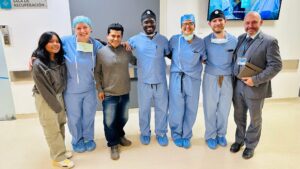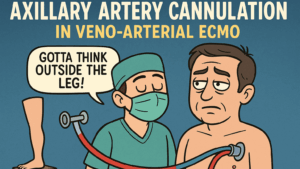Objectives: To overcome some of the challenges of endoscopic minimally invasive valve surgery (MIVS), an automated annular suturing device has been used in aortic and mitral valve replacement surgeries. The current study investigates early clinical outcomes of patients who received aortic or mitral valve replacement with the help of the RAM® device as first experiences in MIVS.
Methods: Between September 2020 and June 2023, 66 consecutive patients (mean age 61.8 ± 11 years) underwent endoscopic minimally invasive aortic or mitral valve replacement through right anterior mini-thoracotomy at two cardiac surgery referral centers in Germany. The RAM® device was used in all Patients. 3.5 and 5.0 sizes were used in 16.7% and 83.3% of patients, respectively. Aortic, Mitral, and double valve surgery was performed in 81.8%, 15.2%, and 1.5% of patients, respectively. Clinical data were prospectively entered into our institutional database.
Results: Cardiopulmonary bypass time and cross-clamping time were 97.9 ± 20.9 and 66 ± 15.7 min, respectively. Intensive care unit and hospital stays were 1 [1-2] and 9 [7-13] days, respectively. No paravalvular leak, and no other intraoperative complications occurred. 30-day and in-hospital mortality were zero. Conversion to sternotomy occurred in 1 (1.5%) patient due to bleeding.
Conclusions: The usage of the RAM® device is a safe, feasible and effective approach to the endoscopic implantation of aortic or mitral valves and yield excellent early outcomes. Larger size studies are needed to evaluate the efficacy and safety of RAM® device.
Keywords: Aortic valve; Automated annular suturing device; Minimally invasive valve surgery; Mitral valve; RAM device.







